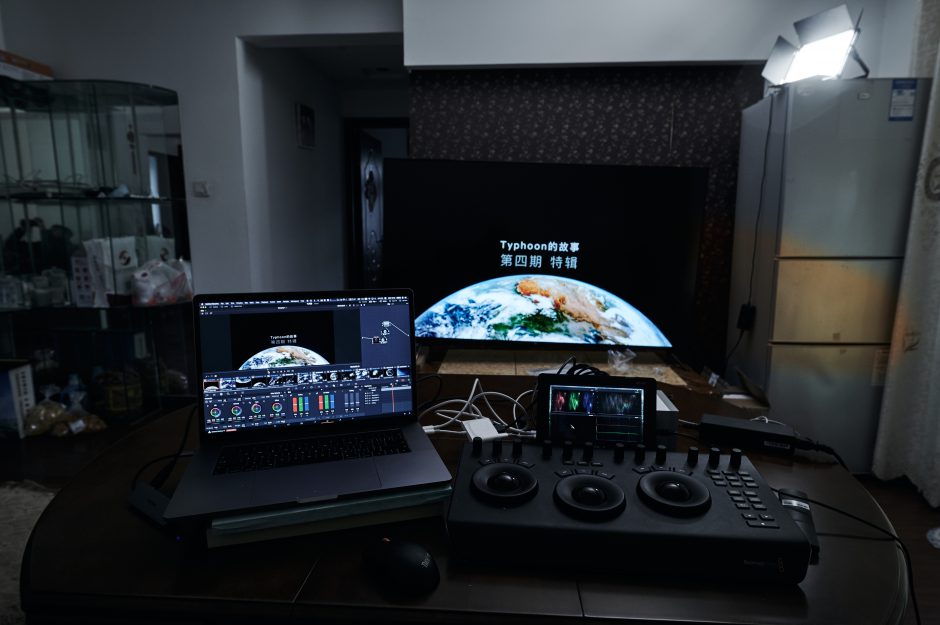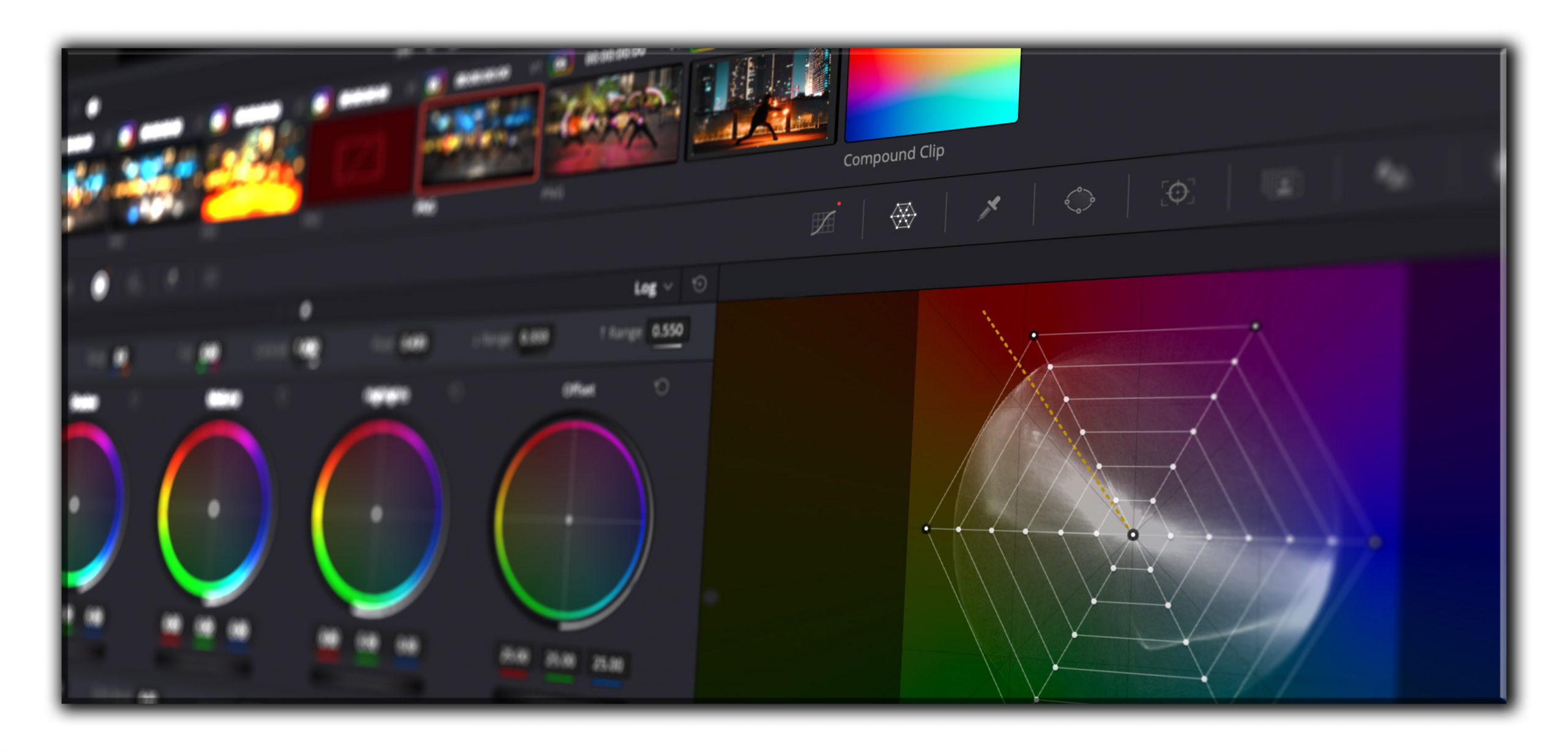Accepted Standards
A Reference Viewing Environment can be considered one where colour critical decisions are made, while a Home Viewing Environment is where finalised deliverables are viewed, with the intent to best match the original artistic intent, as defined by the DoP and colourist, within the Reference Viewing Environment.
In an ideal world, the Home Viewing Environment should match the Reference Viewing Environment. In reality there are many factors that prevent this, as most home users want their lounge to offer a light, bright, colourful and comfortable, relaxing living environment, and not the dim, dark monochrome of a grading room.
Sometimes compromises have to be made. But any compromise will have consequences for those looking to view the DoP and colourist's original artistic intent.
Regardless, accurate display calibration, combined with an understanding of the impact the viewing environment has on the perception of the viewed footage, can ensure the most is gained from any viewing experience.
With the film and TV industry's expansion in to HDR, both PQ and HLG, has made professional calibration yet more critical, and even more complicated. ColourSpace greatly simplifies the process, ensuring any target calibration standard can be achieved in the shortest possible timeframe, and with the best possible final accuracy.
The Film and TV industry, which encompasses Broadcast and Post-Production, is where all of Light Illusion's colour management tools originate, as all those involved with Light Illusion have worked within the industry at professional levels, from engineering to creative colourists.
And the same tools also provide the same level of accuracy for the Home Cinema enthusiast.
As with any standards there are few absolute agreements on what different standards define, with different industry bodies, such as SMPTE, EBU, and ITU-R defining their own standards, based on their own research and thoughts on industry requirements.
As is often the case, sense and logic need to prevail.
SDR HDTV Calibration
SDR is used to define Standard Dynamic Range, as apposed to HDR (High Dynamic Range), and is the basis for HDTV (High Definition TV).
SDR Reference Display Calibration
Within professional industries, Grade-1 reference monitors are the standard for colour critical work, and ColourSpace is the defacto calibration system used across all professional environments, with accuracy proven to be superior to alternative systems.
For HDTV calibration there are standards for any display to be considered Grade-1, making it suitable for colour critical work. Different standards bodies tend to have different absolute standards, but it is possible to define an average, using logical deduction.
The following defines the basic standards for HDTV displays.
- Screen size > 25"
- Minimum resolution of 1920x1080
- SDI video connection to be used
- 100% Peak white (940) = 100 nits
- Peak luma range 100 to 250 nits
- Min black (64) < 0.05 nits
- Simultaneous contrast ratio > 2000:1
- No electronic clipping of sub-black or super white
- White point D65 - x 0.3127, y 0.3290
(D95 optional in some areas - x 0.2831, y 0.2971) - EOTF 2.4/BT1886*, ± 0.1 throughout range
- Grey scale ± 0.5 Δuv
- Colour reproduction < 1.0 ΔE
- Viewing angle ± 45° - < 0.001 Δuv, < 10% luma drop
- No ABL - Automatic Brightness Limiting
BT1886*: The introduction of BT1886 has caused an issue with the standard for SDR EOTF, as BT1886 is a flawed concept, due to the way it further lifts near blacks shadows on any display that has a black that is higher than zero. With black at zero, BT1886 generated a pure power lax 2.4 EOTF.
We recommend a standard 2.4 power law EOTF to prevent the issues associated with BT1886.
SDR Home TV Calibration
As SDR TVs are manufactured to the same underlying standards as professional grading displays there is no separate standard for home TV calibration. The goal is to match as accurately as possible the specification for a grading display, with the caveat that variable viewing environment conditions demand adjustment of the peak luma and EOTF target settings to better match the perceptual intent of the original imagery. See SDR Home Viewing Environment below.
SDR HDTV Viewing Environment
SDR Reference Viewing Environment
Specifications for a Reference Viewing Environment are defined by the various standards bodies, including SMPTE, EBU and ITU-R. While there are some variations, most standards bodies broadly agree on the basic specifications, such as room illumination; wall colours; illumination behind monitor; viewing distance; etc.
The following defines the basic standards for both SDTV (Standard Definition TV) and HDTV (High Definition TV) Reference Viewing Environments.
- Monitor surround luminance to be 5 nits*
- Colour of monitor surround to be D65
(D95 optional in some areas) - Surround extent to be 90° horizontal, 60° vertical
- Remaining surfaces to be dark matte to prevent stray light
- Average room Illumination ≤ 5 nits
- Viewing distance 3.2 screen height**
- Viewing angle to define < 0.001 Δuv
5 nits*: A 5 nits surround is, in our view, too dim for SDR grading, but has been introduced on the back of the requirements for HDR (PQ and HLG) grading rooms.
We still recommend the previous standard of 10% peak screen luminance, which is nominally 10 nits surround.
3.2 screen height**: This relates to the HDTV screen resolution, rather than SDR (Standard Dynamic Range).
SDR Home Viewing Environment
The above SDR display and Reference Viewing Environment standards can then be compared to a TV within a Home Viewing Environment.
- Environment illumination ≈ 64 nits
- 100% Peak white (940) = 100 to 500 nits
(Set based on room illumination) - EOTF 1.8 to 2.4
(Set based on room illumination and display peak white) - Viewing distance from 2 to 12 screen heights
The above obviously has no specifications for room colours, reflectance of wall coverings, etc., as such environmental considerations are often defined by the desire to offer a light, bright, colourful and comfortable, relaxing living environment.
It is these variations, specifically with illumination, that makes the biggest difference to the home viewing environment, and which means home TV calibration has to be looked at differently to a grading display within a Reference Viewing Environment.
If you were to calibrate a home TV within a Home Viewing Environment to the above Reference Atandards for SDR displays the on-screen image would be far too dull and washed-out with the imagery nothing like that intended by the program maker. To arrive at a viewing image that is as similar as possible to look & feel of the graded intent means increasing the peak brightness, as well as reducing the EOTF value, so the on-screen imagery can better counter the bright viewing environment.
Obviously, if you are serious about watching accurate imagery at home you will control your viewing environment. But even then, there may be compromises that have to be accepted, and understanding that will enable the best alternative calibration to be defined.
The issue is that there are no standard approaches as to how to adjust TV display calibration to accurately counter the variable environmental settings within a standard home viewing environment. This is an area in desperate need of research, and is something the BBC have attempted to look at with their HLG HDR standard's System Gamma value, as HDR viewing environments are far more critical than SDR.
HDR UHDTV Calibration
HDR is used to define High Dynamic Range, as apposed to SDR (Standard Dynamic Range), and is the basis for UHDTV (Ultra-High Definition TV).
HDR - A Moving Target
HDR, combining High Resolutions (nominally 4K) with HDR (High Dynamic Range) via PQ (Perceptual Quantizer/ST2084) or HLG (Hybrid Log-Gamma) EOFT (Gamma) and WCG (Wide Colour Gamut) imagery is gaining momentum as the next enhancement to our viewing experience. However, the whole HDR concept is as yet poorly defined, and even the basics can be very difficult to get to grips with, especially with respect to display specifications.
Further, HDR is viewing environment critical, specially PQ based HDR, and without careful environment management is very difficult to watch. HLG based HDR is potentially less environment critical, and includes a System Gamma variable for surround illumination, but like PQ based HSR still has issues with viewed footage appearing dull and washed-out compared to the same SDR imagery.
HDR Reference Display Calibration
As with SDR defined above, HDR reference monitors are the standard for colour critical work, and ColourSpace is the industry defacto calibration system, with accuracy proven to be superior to alternative systems.
The difference is there is no Grade-1 HDR display, as no present display can meet the requirements for HDR - Rec2020 gamut, and/or the 10,000 nit peak luma target for PQ based HDR. Consequently, a sub-specification for a Grade-1B display is presently the pinnacle for HDR displays.
With the industry expansion in to HDR, both PQ and HLG based, professional calibration has become yet more critical, and even more complicated. ColourSpace greatly simplifies the process, ensuring any target calibration standard can be achieved in the shortest possible timeframe, and with the best possible final accuracy.
The following defines the basic standards for Grade-1B HDR grading displays, although these are still in a state of flux, and change regularly.
- Screen size unspecified
- Screen resolution to match displayed signal format
- Colour depth 12 bit
- 100% Peak white (940) ≥ 1000 nits
- Display to clip at max luma value - no roll-off/tone mapping
- Min black (64) = 0.005 nits
- Simultaneous contrast ratio > 10,000:1
- No electronic clipping of sub-black or super white
- White point D65 - x 0.3127, y 0.3290
- Colour gamut = P3
- EOTF PQ/BT2084, or HLG, ± 0.025 throughout range
- Grey scale ± 0.5 Δuv
- Colour reproduction < 1.0 ΔE
- Viewing angle ± 45° - < 0.001 Δuv, < 10% luma drop
HDR Home TV Calibration
For home HDR TVs the display specification is somewhat different, and starts to reveal the underlying inconsistencies with HDR.
- Screen size unspecified
- Screen resolution 3840 x 2160
- Colour depth = 10 bit
- 100% Peak white (940) ≥ 1000 nits with min black (64) ≤ 0.05 nits
- 100% Peak white (940) ≥ 540 nits with min black (64) ≤ 0.0005 nits
- White point D65 - x 0.3127, y 0.3290
- Colour gamut BT2020
- Colour gamut coverage ≤ 20% of P3
- EOTF PQ/BT2084, or HLG
Notice a lack of colour accuracy targets, as well as the low allowable gamut (90% of P3 is not significantly greater then Rec709). Note as well that screen resolution is assumed to define full colour pixels, meaning that white pixels, as used in WOLEDs do not count against the display's final resolution.
Note also that tone mapping is a requirement for all home PQ based HDR TVs, as few can match the peak luma of the original grading display. And while there is a standard for the implementation of PQ based HDR Tone Mapping (roll-off), few TV manufacturers actually implement it as per the specification, as they instead strive to overcome the issues of the less than perfect Home Viewing Environment. See below for further information.
HDR UHDTV Viewing Environment
HDR Reference Viewing Environment
Specifications for a HDR colour critical Reference Viewing Environment are also defined by various standards bodies, including SMPTE and the ITU-R. Specifications for a Home Viewing Environment do not presently exist, due in part to issues with the absolute nature of the PQ HDR specification.
The following defines the basic standards for a HDR Reference Viewing Environment, and match those for HDTV.
- Monitor surround luminance to be 5 nits*
- Colour of monitor surround to be D65
- Surround extent to be 90° horizontal, 60° vertical
- Remaining surfaces to be dark matte to prevent stray light
- Average room Illumination ≤ 5 nits
- Viewing distance 1.5 screen height**
- Viewing angle to define < 0.001 Δuv
5 nits*: A 5 nits surround is defined due to the potentially low luma of shadow detail, based on the specified EOTF for both PQ and HLG based HDR. This is part of the issue with home viewing environments, where the surround illumination is often difficult to control, especially down to the specification levels.
1.5 screen height**: This relates to the UHD TV screen resolution, rather than HDR (High Dynamic Range).
HDR Home Viewing Environment
While there is no specification for a HDR Home Viewing Environment, is should be obvious that varying the home environment from the above reference environment will result in viewing issues, especially for PQ based HDR as it is an absolute standard - input signal bit levels = absolute output brightness levels.
Obviously, if you are serious about watching accurate imagery at home you will control your viewing environment. But even then, there may be compromises that have to be accepted, and understanding that will enable the best alternative calibration to be defined.
However, often the home viewing environment can't be suitably controlled, so what impact does that have?
The main issue is that HDR images will often appear dimmer than equivalent SDR images of the same material, when viewed within the same home environment. This dimmer experience stems from the fact that home SDR TVs are often calibrated to a much higher peak brightness than the 100 nits specification for a Grade-1 display, as well as use a lower (brighter) EOTF value to overcome the brighter home viewing environment, as mentioned above.
One of the issues with HDR for home viewing is there is no way to increase the display's light output to overcome surrounding room light levels - as the display's peak brightness cannot be increased, and for PQ based HDR neither can the fixed/absolute EOTF (Gamma) curve. The HLG specification does include a System Gmma variable that will alter the display's overall EOTF, to compensate for surround brightness. While this helps, the underlying relative darkness of all HDR imagery remains a problem for bright viewing environments.
The reality is that to be able to view HDR footage acceptably, environmental light levels will have to be very carefully controlled. Far more so than for SDR viewing. This really does mean using a true Home Cinema environment.
Or, the HDR EOTF (Gamma) has to be deliberately broken, to allow for brighter images - which many TVs do, and has even been implemented for Dolby Vision with their IQ concept.



